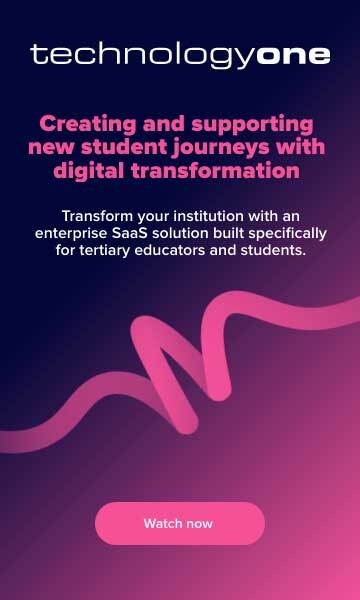An expert panel discussed how holistic approaches to online and hybrid learning delivery can enhance the student experience
With the Covid-19 pandemic accelerating higher education’s switch to online and blended models of learning, the Times Higher Education Digital Transformation Forum 2020 provided an opportunity for senior leaders to discuss how the student journey has changed, and what further shifts in universities’ digital infrastructure are needed in order to better support moving the majority of curricula online and improving access for students.
Lucy Lu, provost and global academic director of the London School of Commerce, noted that higher education institutions had to be mindful of not only their own digital capacity but also that of their students.
Regarding this, Melissa Highton, director of learning, teaching and web services at the University of Edinburgh, said that students now needed new information from universities so that they could assess their requirements when it came to studying online. “We made a big investment in laptops to make available to students for loans,” she explained.
Mairi Scott, director of the Centre for Medical Education (teaching and scholarship) at the University of Dundee, cited an example of first-year medical students missing out because of their lack of physical contact with patients. “The philosophy of the curriculum is that all of the knowledge that the students start to acquire should be based on understanding patients and the patient experience,” she said. “We have lost a bit of that and are having to reproduce it in other ways.” In order to do so successfully, she argued, universities must facilitate high-quality team-based learning.
“In Dundee, we had actually changed our entire lecture theatre, much to the shock and horror of some of the established senior clinicians,” she added. “We set up in booths and bays. Students came in with their laptops and worked in groups, with the expert at the front answering questions and being challenged on the answers they come up with during their preparation for teaching. That can be completely replicated virtually.”
Some institutions, such as the University of Edinburgh, had postponed decisions as to the provision of digital and hybrid learning until later in the academic year, but were now in the process of redesigning curricula for a second semester that will be enhanced by hybrid learning.
“There are many courses where there are lab sessions that need practicals, and I think that people had pushed those into the second semester in the belief that maybe things would be different,” said Highton. “We are realising now that we are going to have to plan for semester two – and possibly longer – teaching with considerable use of technology in the online space and also in the classroom. A lot of the technology that we are thinking about now is having to be scaled across all of our teaching rooms.”
The panel also discussed how digital transformation can help manage student well-being. It was noted that pastoral care can be enhanced by data, and Peter Nikoletatos, global industry director of education at TechnologyOne, said that universities must look beyond the curriculum when analysing these. Additional factors, such as cultural experiences, are a key consideration of international students when choosing where to study, he said. “That gets lost in translation when you are suddenly asking international students to study from their apartments or study online,” he explained.
The panel considered best practice for enhancing student monitoring, including aggregating data to inform faculty about when interventions might be necessary. However, it was also noted that because so much of the student experience has moved online, universities must develop new standards of safeguarding.
“The online experience is not something that the university has ever considered as part of our safeguarding responsibility,” said Highton. “We have not paid enough attention to student behaviour, people’s behaviour and how toxic that can be for some groups of people – the levels of misogyny, racism, harassment and online bullying.”
Nikoletatos agreed, adding that a key consideration of digital transformation should be how collaboration between tech providers and higher education institutions can create new and better markers for online safeguarding, as universities engage with the needs of students, faculty and the curricula as a whole.
In Australia, the pandemic presented a steep learning curve as students returned to campuses in February only to go into lockdown. “We had to work very closely with our partners there,” said Nikoletatos. “Many of them had platforms already but it was making sure that that platform was cascading out to all of their students and staff. There wouldn’t be a university that didn’t begin by at first acknowledging the hardships that students were going to face in the initial period, and their primary concern was the safety and well-being of their students and also of their staff.”
Find out more about TechnologyOne and higher education.

